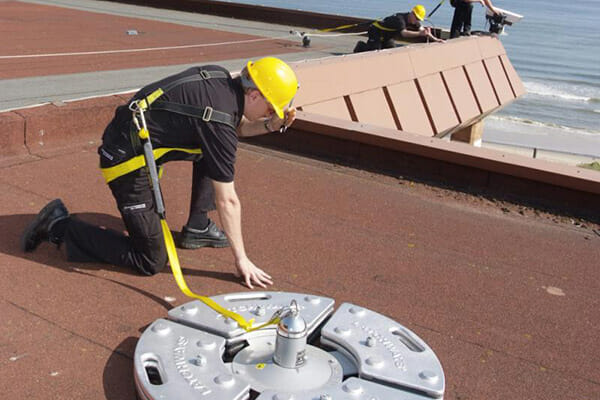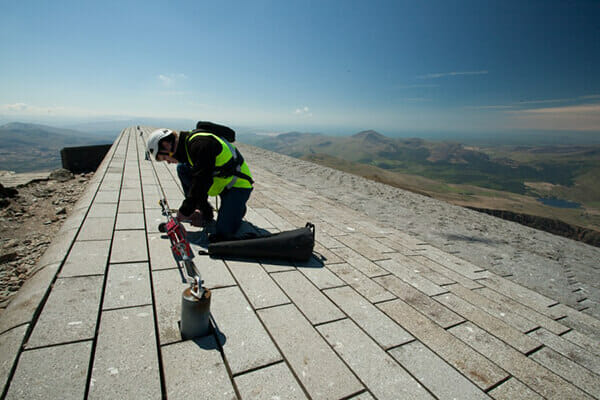What Is Fall Protection?
Fall protection refers to the equipment, systems, and procedures designed to prevent workers from falling from height — or to safely stop a fall should it occur. Its purpose is simple: to protect people, reduce risk, and ensure compliance with modern safety standards.
Although today’s systems are engineered with precision, the concept is centuries old. Early forms of fall protection were used by sailors, steeple workers, and arborists who relied on ropes and rudimentary harnesses to counteract gravity. These foundations evolved into the highly developed fall arrest and fall prevention technologies used across construction, maintenance, and industrial sectors today.
“When one falls, it is not one’s foot that is to blame.”
A reminder that effective planning and safe systems of work — not personal skill — prevent accidents.
Fall Prevention vs. Fall Arrest.
Understanding the two core approaches to working at height is essential for both safety and compliance:
Fall Prevention.
Measures that stop a fall from happening in the first place.
These are preferred wherever reasonably practicable.
Examples include:
-
Guardrails and edge protection
-
Safety nets
-
Walkways and platforms
-
Collective barriers
Collective measures offer the greatest level of protection because they do not rely on the worker wearing or adjusting equipment correctly.
Fall Arrest.
Systems designed to safely stop a fall that is already underway.
Examples include:
-
Safety harnesses
-
Lanyards
-
Horizontal lifeline systems
-
Self-retracting lifelines (SRLs)
These require workers to be trained, competent, and equipped with properly maintained PPE.
Collective vs. Personal Fall Protection.
Fall protection systems fall into two main categories:
Collective Protection (Preferred).
Protects multiple users at once.
Requires no specialist user training.
Examples: guardrails, nets, fixed barriers.
Personal Protection.
Specific to each individual worker and dependent on correct usage.
Examples: full-body harnesses, lanyards, connectors, SRLs.
Both have their place, and the right choice depends on site conditions, risk assessment, and access needs.
Why System Design Must Be Site-Specific.
No two buildings are alike — and neither are their access and safety requirements.
Fall protection systems must be custom-designed by competent, qualified professionals to ensure compliance and performance.
Copying or transferring a system from one building to another can lead to unsafe configurations, incorrect load paths, and non-compliant installations.
A tailored design ensures:
-
Structural suitability
-
Correct anchor placement
-
Safe access flow
-
Compliance with relevant standards
-
Long-term durability and inspection feasibility
The Five Key Elements of a Personal Fall Protection System.
An effective system is built around five essential components:
A) Anchorage
A secure structural point or engineered anchor device to which the system is attached.
This is the foundation of a safe fall protection setup.
B) Body Wear
A certified full-body harness designed to disperse forces during a fall arrest event.
Comfort, fit, and adjustment are critical.
C) Connector
The link between the harness and anchorage.
This may include lanyards, SRLs, or connecting subsystems.
D) Deceleration Device
A component that absorbs energy and reduces the forces placed on the body during a fall.
Recommended even in restraint systems to protect against misuse.
E) Emergency Planning & Rescue Equipment
A documented, site-specific rescue plan is essential.
Workers must know how to act swiftly to prevent suspension trauma, where restricted blood flow can lead to serious injury — even after the fall has been arrested.
Compliance, Quality & Product Standards.
Fall protection systems can be configured from many component combinations.
However, every item must meet strict safety standards, be correctly installed, and be inspected at the required intervals. System integrity depends on:
-
Compatibility of components
-
Proper installation and testing
-
Competent user training
-
Regular inspection and recertification
-
Documentation and record-keeping
When these factors align, fall protection becomes not just a compliance requirement — but a life-saving solution.





